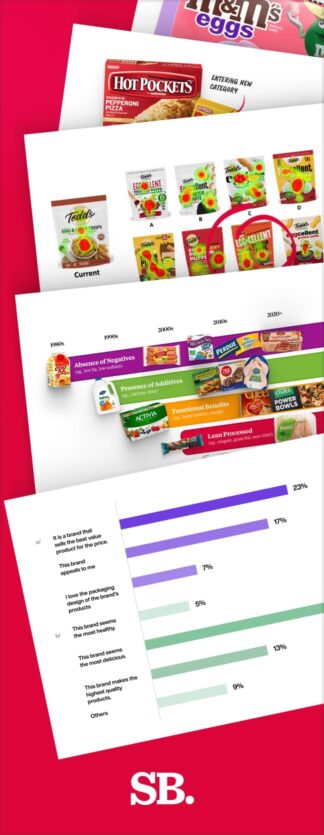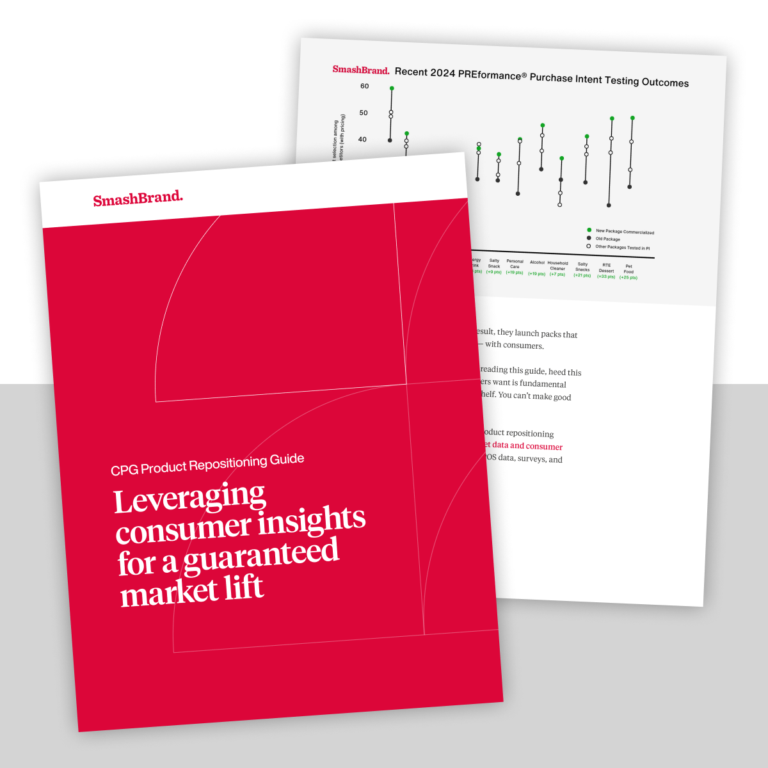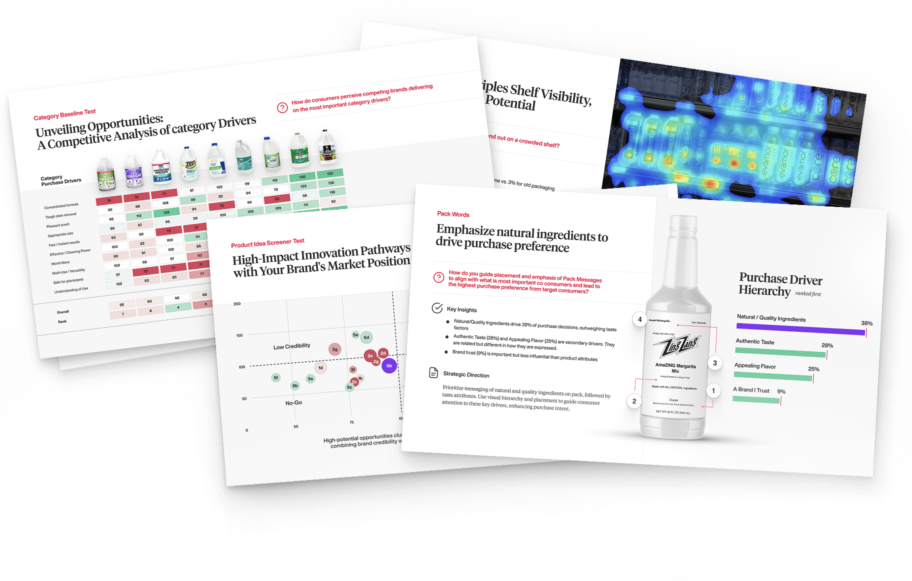According to the American Pet Products Association, over 68 million U.S. households own a dog. This means a growing need for dog food, and hence competition. With every brand clawing for shelf space, the pet industry isn’t where you can quickly come in with a low barrier to entry. Your dog food packaging design is a key factor in influencing purchasing decisions on the shelf.
Miss the visual cues or fail to trigger emotion, and your pet food pouch, bag, or wet food container is invisible. Your competitor’s pet food wins the cart, and you’re left out. In this category, flexible packaging must work harder, faster, and smarter than most food packaging ever will. Why? Because it carries a greater functional burden, it must work without words, and it’s in one of the most visually cluttered categories.
With more labeling rules than most dry pet food packaging and more emotional pressure than typical food, shoppers buy with both their heart and head. Every inch of that pouch or bag is make-or-break. And now, with the push toward sustainable packaging, design is all about long-term brand relevance. Whether you’re developing a dog food line from scratch or rethinking your existing dog food packaging design, you will learn the essentials, from regulatory compliance to emotional storytelling.
Dog food isn’t like other CPG, and neither is its packaging.
Food packaging isn’t just branding; it is also a symbol of trust. Especially in the dog food space, where the stakes are higher, regulations are tighter, and consumers are more discerning. Whether you’re developing a pet food bag, a pet treat pouch, or a complete line of custom pet food packaging, the rules are different. Here’s why.
Regulatory complexity.
Dog food packaging design starts with non-negotiables. The pet food product must comply with AAFCO (Association of American Feed Control Officials) standards, which include:
- Nutritional Adequacy Statements (e.g., “Complete & Balanced for All Life Stages” or “Intended for Supplemental Feeding Only”)
- Guaranteed Analysis (crude protein, fat, fiber, moisture, and sometimes omegas and vitamins)
- Calorie Statements (kcal per kilogram and cup or treat)
Beyond that, brands face language limitations. Wellness cues in human CPG, like “low-carb” or “low-glycemic,” may be misleading in dog food packaging. That requires a different communication strategy: highlighting ingredient quality, showing sourcing transparency, and relying on visuals and implied benefits rather than direct claims. Regulatory filters shape both packaging material and messaging structure.
Ingredient scrutiny and health signaling.
Pet owners behave like savvy health shoppers. They’re scanning pet food bags the same way they scan their groceries, looking for clean labels, functional benefits, and trustworthy protein sources. It means a complete dog food packaging solution must:
- Highlight meat-first formulations (“95% chicken, liver & broth”> “high protein”)
- Omit fillers like corn, wheat, and soy in visible spots (ideally front panel)
- Call out functional ingredients like salmon oil, probiotics, or sweet potatoes
From treats to dry food, buyers are searching for signs of wellness. Recyclable packaging and ethical sourcing are also gaining influence, signaling long-term brand values.
Functional communication needs.
Unlike traditional CPG, pet food products must communicate how they work, often without the benefit of showing the end user (the dog). In this category, product form equals product function, and packaging design must express it all:
- Is it a pet treat with a soft texture that doesn’t crumble?
- Is the kibble for small mouths or large breeds?
- Does it serve as a topper, a full meal, or a training reward?
Because you can’t use video or voice on-shelf, static visuals must do the job, whether it’s high-quality photography, icons showing treat size, or texture descriptors like “semi-moist” or “crunchy.” It’s why every packaging material choice matters. A gusseted pet food bag with resealable closures signals freshness. Transparent windows in custom pet food packaging add credibility. Even the feel of the pouch in hand can reinforce product quality or brand values.
Pillars of high-performance dog food packaging design.
In pet care, traditional approaches borrowed from human food packaging design are insufficient. Pet parents seek trust and transparency not just for dry food product packaging design, but also for pet supplement packaging. To thrive in the competitive pet food industry, brands must prioritize connection and distinctiveness. The following are the key pillars of high-performance dog food packaging design.
Emotional connection and brand personality.
In a crowded marketplace, an emotionally resonant pet food brand isn’t just preferred, it’s necessary. For pet food manufacturers, effective packaging means conveying genuine care, loyalty, and love at first glance. The best brands understand this deeply, using their packaging to evoke the bond between humans and their furry friends.
From frozen food in a premium gusseted bag to playful treats in vibrant pouches, emotional connection is built through warmth, authenticity, and thoughtful language. Powerful yet simple phrases, such as “Food is love” or “Your dog’s best life starts here,” transform ordinary packaging options into messages of genuine care and affection.
Using intentional white space in packaging design can reinforce these heartfelt messages, allowing the warmth of your brand personality to shine clearly without overwhelming shoppers.
By opting for sustainable pet food packaging, your brand conveys emotional depth and aligns with the values that consumers increasingly expect. After all, a genuine emotional connection is about purpose, trust, and a clear commitment to caring for both pets and the planet.
Distinctiveness and shelf presence.
In the packaging industry, distinctiveness is mandatory. Your product packaging must not scream “me too!” Your pet food packaging solutions must instantly capture attention and signal a difference, elevating both visibility and consumer preference.
To achieve standout shelf presence, consider bold, ownable visual elements beyond your logo. Employ disruptive structures, perhaps a rustic paper bag for a premium dog treat line, metallic finishes for upscale options, or clear windows in your container designs to highlight ingredient transparency and product freshness.
Thoughtful color selection is crucial: teal might appeal to new pet parents welcoming puppies, navy signals trustworthiness, and strategically avoiding overly clinical colors like stark white can reinforce warmth and authenticity.
Additionally, embracing eco-friendly packaging options, such as sustainable paper packaging, further enhances your brand’s distinctiveness. These environmentally conscious choices resonate strongly with modern pet owners, conveying your genuine commitment to their beloved furry friends and the planet, an increasingly influential factor in purchase decisions.
Shoppability and information hierarchy.
Effective packaging eliminates confusion and boosts conversions, making pet ownership decisions simple, intuitive, and instantaneous. The best types of packaging design act as visual shortcuts, clearly communicating key product benefits, such as “grain-free,” “complete & balanced,” or “raw,” exactly where consumers expect them.
To streamline shopping across your line of pet care products, maintain a consistent visual system to differentiate product tiers (such as Essential, Pro, and Ultra), whether customers are browsing shelves or scrolling through e-commerce packaging online. Utilize icons liberally to minimize text, reduce cognitive load, and quickly convey critical information at a glance.
Embracing brand innovation and packaging means strategically aligning your product’s visual hierarchy with consumer expectations. Incorporating sustainability through eco-friendly packaging can further enhance brand clarity and appeal, signaling your commitment not only to pet health but also to the planet.
Communicate the product’s job instantly.
For dog food especially, packaging design must instantly convey what the product is, who it’s for, and why it’s better. Successful brands embrace packaging design trends that prioritize clear communication of product benefits.
For example, freeze-dried dog food should highlight raw nutrition and travel convenience right on the front of the pack, while training treats emphasize their low-calorie, semi-moist appeal for quick rewards. Jerky communicates indulgent bonding moments with pliable strips. L.I.D. kibble packaging prominently showcases minimal ingredients to ease sensitivities and build trust.
Whether you’re optimizing DTC packaging design or refining structural packaging design for retail, employing rigorous consumer validation methods like a preformance packaging design test ensures your message resonates immediately, turning clarity into confidence at every touchpoint.
Brand differentiations and claims hierarchy.
Your packaging must make your brand’s uniqueness unmistakable, particularly when direct claims like “low-carb” or “low-glycemic” are off-limits. Prioritize and amplify your differentiators right on the front panel.
Lead boldly with meat-first formulas, emphasizing powerful, trust-building claims like “95% meat,” “single animal protein source,” or “no pea protein.” Reinforce clean-label credibility by explicitly stating, “No corn, wheat, soy, or artificial flavors,” prominently on your packaging.
Highlight premium add-ins that elevate perceived value, such as goat’s milk for digestibility, kelp for nutrient density, or patented probiotics like Ganeden BC30. This strategic hierarchy ensures your claims not only stand out but also effectively position your product as superior at a glance.
Compliance and consumer confidence.
Rules matter, but how you follow them signals quality. In both rigid cartons and sustainable pet food packaging, the clear display of AAFCO nutritional adequacy statements transforms compliance from a checkbox into a trust builder.
Position the “Complete & Balanced” claim prominently on the front panel and place the Guaranteed Analysis and calorie info where shoppers instinctively look, often near a scannable QR code or back-panel header.
Elevate confidence even further with visible satisfaction guarantees, QR codes that link to ingredient sourcing, or third-party certifications. In today’s crowded pet care product aisles, transparent compliance isn’t just mandatory, it’s a powerful packaging solution that sets your brand apart.
Communicating what you can’t say on dog food packaging design.
When regulations prohibit you from labeling products as “low-carb” or “low-glycemic,” your packaging still needs to convey those benefits silently. Here’s how to turn every design choice into an unspoken value.
You can’t flaunt “low-glycemic” on the front panel, but you can signal it through context. Lead with benefits you’re allowed to state, like “supports healthy energy levels” or “balanced nutrition,” and let the subtext do the heavy lifting. Avoid vague buzzwords. Instead, use precise, permitted claims (“grain-free,” “high-protein,” “digestive health”) in prominent positions. Every word must earn its spot.
Highlight coconut flour, red lentils, or yellow peas in ingredient callouts or ingredient-first lists. Use simple icons or ingredient snapshots on the front to underscore these carb sources. A well-designed ingredient panel speaks volumes: it tells pet parents exactly what’s inside, and what’s left out, without breaking any rules.
Front-of-pack is premium real estate; reserve it for unambiguous, permitted signals. Then use a clear hierarchy on the back panel to expand the story. Structure the panels so that the “Ingredient Spotlight” or “Why It Matters” sections catch the eye immediately after the nutritional adequacy section. Use call-outs, bullet lists, and supportive infographics to explain how those lentils and flours translate to stable energy. The back panel becomes your silent pitch deck, detailed, convincing, and compliant.

Nice Package
Don’t miss out on our monthly newsletter Nice Package!
Each month, we deliver a data-driven newsletter directly to your inbox, unpacking a critical topic in the FMCG & CPG industry.
"*" indicates required fields
Data-driven dog food packaging design that performs.
Looking for the best-selling dog food packaging that performs? We can help! SmashBrand is a data-driven packaging design agency that combines deep consumer insights, strategic clarity, and radical empathy to create packaging solutions guaranteed to win shelf space, drive trial, and earn lifelong loyalty from pet parents. Contact us today to get in touch with our team.
Subscribe to
Nice Package.
A monthly newsletter that unpacks a critical topic in the FMCG & CPG industry.
Free Resource.

CPG product repositioning guide.
Explore the five undeniable signs your CPG product needs repositioning along with strategies for leveraging consumer insights for a guaranteed market lift.
Learn More About CPG product repositioning guide.


